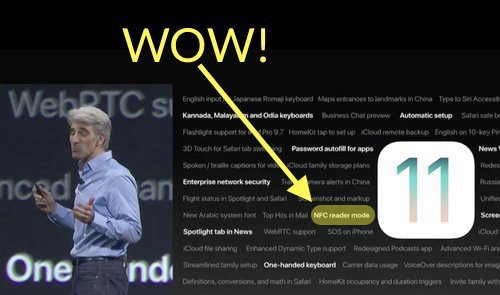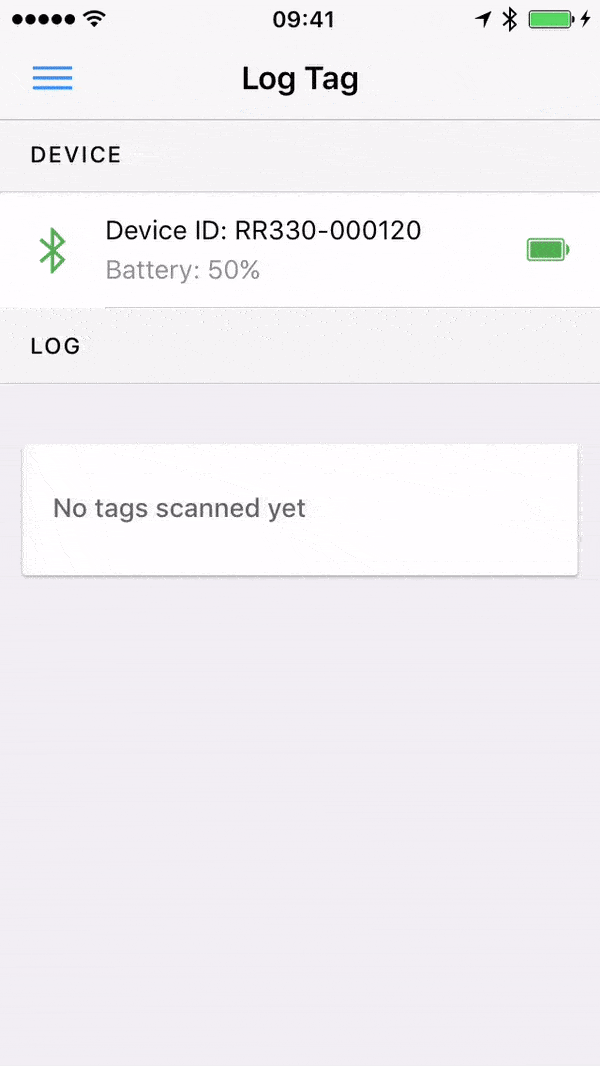Apple opens NFC to Developers with iOS11
 After almost 8 years since Google introduced NFC on Android smartphones, Apple has officially joined the party. iOS11 was announced yesterday at WWDC, Apple’s annual developer’s conference, as small footnote amongst a host of new features. Since you could have missed it if you weren’t paying attention, we figured we’d elaborate on what this means for developers and enterprises.
After almost 8 years since Google introduced NFC on Android smartphones, Apple has officially joined the party. iOS11 was announced yesterday at WWDC, Apple’s annual developer’s conference, as small footnote amongst a host of new features. Since you could have missed it if you weren’t paying attention, we figured we’d elaborate on what this means for developers and enterprises.
TL;DR: Only enabled on iPhone7/7+ devices.Supports ISO14443 and ISO15693 tags. Only reads NDEF data (no writing, no APDUs). App must run in the foreground (no background support). iOS11 general release out in September, 2017.
For use with iPhone7/7+
According to the API documentation, Apple has chosen to only enable NFC reader support on their latest iPhone hardware, the iPhone7 and 7+. This makes sense since the iPhone6 wasn’t designed with NFC reading in mind. The glass back on the iPhone7 design is a lot more amenable to interrogate tags of various geometries.
This contrasts the iPhone6 with a metal back that limits a good scan field. It’s not to say that it’s not possible though as this hacker showed on his jailbroken iPhone6. Which ever the case, Apple is wise to stick with what will work best. When NFC performs great it’s lifts the whole ecosystem up.
ISO14443 and ISO15693
The NFC Forum specification defines 5 tag types all of which are supported by the CoreNFC framework in Apple’s iOS11 release. This means that physical layers defined by both ISO14443 and ISO15693 specifications are covered. It’s a great achievement given there are niche use cases where ISO15693 is most suitable. Like for small geometry tags.
That being said, there’s no API access to the different layers of the protocols so reading tag UUID or raw data blocks is not possible. This will be a problem for most developers who are looking to build integration off of the uniqueness of tag UUID, but it’s a smart move from Apple. It avoids the overwhelming support costs of educating the market on low level commands while moving applications away from the vulnerabilities and privacy concerns around UUID-based solutions.
Reading NDEF Data
Though Apple won’t give you tag UUIDs, it will let you read NDEF messages off of tags. That’s pretty useful given the WellKnownType definition includes URI, Text, Smart Poster, Connection Handover, and Signature Record. The most useful of these is the URI type with ability of sharing URLs, emails, phone numbers, or even a drafted SMS message. Along with an app, NDEF messages can deliver some fascinating use cases. The most compelling I would argue involve launching a web site, proving geospatial presence, and connecting to WiFi.
NFC Actions FTW!
In order to reap the benefits of these experiences, iPhone7 users will need an app. This is because -unlike Android- the iOS11 release doesn’t offer system level NFC support. So you’ll need to have an app installed and in the foreground in order to detect NFC tags with NDEF messages on them. Our NFC Actions app is a perfect solution for that.
NFC Actions is available for download from the App Store and integrated with Flomio’s NFC readers as well as the iPhone’s native NFC functionality. It will not only let you read NFC tags but write them as well! Also, along with it’s tight integration with IFTTT and AWS, you’ll be able to build end-to-end solutions using it.
-Richard





Leave a Reply
Want to join the discussion?Feel free to contribute!